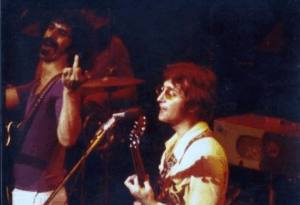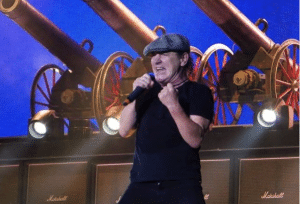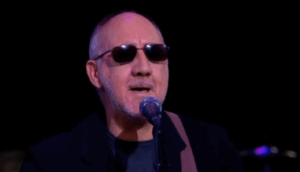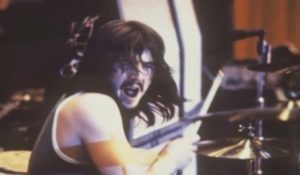The Inaccuracies Inside ‘Bohemian Rhapsody’ The Movie

via @Chinwonder2 / YouTube
“Bohemian Rhapsody” hit theaters with the force of a stadium anthem—loud, emotional, and designed to get everyone on their feet. For many fans, it was a long-awaited tribute to Freddie Mercury and Queen’s larger-than-life legacy. But behind the foot-stomping soundtrack and Rami Malek’s Oscar-winning portrayal lies a version of the band’s story that bends more than a few truths.
The film reshapes real events with a heavy hand, often prioritizing dramatic pacing and emotional payoff over historical accuracy. While this approach makes for a cleaner narrative arc, it also means several key facts were shifted, exaggerated, or omitted entirely. At times, the result feels less like a rock biopic and more like a carefully curated highlight reel.
Some of the changes were made for legal reasons, others to fit the expectations of a mainstream audience. Either way, “Bohemian Rhapsody” paints a simplified version of Freddie Mercury’s complex life and the band’s tangled history. It’s still a thrill to watch—but only if you don’t look too closely.
View this post on Instagram
Brian May’s Iconic Stomp-Clap Anthem Didn’t Come From A 1980 Jam Session
In the film, Queen is shown cooking up “We Will Rock You” during a 1980 studio session, seemingly inspired by Freddie Mercury’s tardiness. Brian May wants to create a song that involves the audience, so he starts stomping and clapping in rhythm—sparking what would become one of the most recognizable anthems in rock history. The moment plays well onscreen, but the timing doesn’t hold up.
The truth is, “We Will Rock You” had already been rocking arenas years before that scene supposedly takes place. The song was released in 1977, on the News of the World album alongside “We Are The Champions.” The two tracks were intended to complement each other, and both became live show staples well before the 1980s ever arrived.
By shifting the creation of the song to a later era, the movie compresses the band’s timeline to fit a neater narrative. It may seem like a harmless change, but it subtly rewrites how and when Queen started shaping their identity as a stadium-rock powerhouse. The anthem didn’t come from last-minute studio magic—it was a calculated, early masterstroke.
Freddie Didn’t Push Mary Austin Out Of His Life—He Kept Her In It Forever
Bohemian Rhapsody paints a painful picture of Freddie Mercury’s relationship with Mary Austin. As the story goes, fame consumes Freddie and pulls him away from Mary, leaving them distant yet cordial neighbors. It’s a convenient emotional beat for the film, but it doesn’t do justice to the reality of their lifelong bond.
In truth, Mary remained one of the most important people in Freddie’s life long after their romantic relationship ended. She stayed close to the band during their tours, worked for Mercury’s management company, and was deeply involved in his personal affairs. When Freddie passed away, he left Mary a large part of his estate, including his mansion, and trusted her with his ashes.
Mary once said she felt like they had a spiritual marriage—one that lasted until death. The film’s version downplays that unbreakable connection for the sake of dramatic contrast. What audiences don’t see is how constant and unwavering Mary’s presence was, even through the chaos of Freddie’s fame and illness.
View this post on Instagram
Queen Didn’t Start With A Perfect Lineup—They Had To Find Their Missing Piece
The movie introduces John Deacon as part of Queen’s very first gig, giving the impression that the classic lineup was complete from the start. The early band scenes emphasize chemistry and immediate cohesion, showing Freddie, Brian, Roger, and John locking into place like a musical jigsaw puzzle. But the real story wasn’t so seamless.
In reality, Queen went through several bassists before they found Deacon. He joined the band months after its formation in 1971, following a series of tryouts and short-lived stand-ins. Once in the group, Deacon proved invaluable—not just for his quiet demeanor, but for writing hits like “Another One Bites the Dust” and “You’re My Best Friend.”
Ignoring this part of the journey might help the film flow faster, but it glosses over a key piece of Queen’s history. Deacon wasn’t just there from day one—he was the final element that helped the band solidify their sound. That missing puzzle piece didn’t just fall into place; it had to be found.
“Fat Bottomed Girls” Didn’t Belong On That Tour—It Didn’t Even Exist Yet
One of the more noticeable anachronisms in Bohemian Rhapsody comes when “Fat Bottomed Girls” plays over a montage of Queen’s first U.S. tour in 1974. The sequence has the right energy—wild, celebratory, and confident—but it’s built on a song that hadn’t been written yet, let alone released.
At that point in time, Queen was still promoting their earlier work, specifically Queen II. “Fat Bottomed Girls,” on the other hand, came from the Jazz album, which didn’t come out until 1978. That’s a four-year gap between the moment depicted and the song being used—an odd choice for a film trying to celebrate the band’s history.
This kind of creative liberty might pass unnoticed by casual viewers, but it muddies the real timeline of Queen’s discography. Each album marked a clear shift in their style and persona. By throwing in songs from the future, the film blurs how their sound actually progressed—and skips over the grit of their early years.
The Band Didn’t Reunite For Live Aid—They Were Already Going Strong
A major dramatic thread in Bohemian Rhapsody is the idea that Queen’s Live Aid performance was a comeback—an emotional reunion after years of silence, tension, and uncertainty. The band members are shown reluctantly agreeing to play together again, barely making it through rehearsals before delivering one of rock’s most iconic performances. It’s stirring—but it’s also fiction.
The truth is, Queen never broke up. Leading up to Live Aid, they had just completed The Works tour and were on a scheduled short break. Far from being estranged, the band was in sync and took the Live Aid show very seriously. They rehearsed thoroughly and approached it with the full force of their experience and professionalism.
Transforming this into a reunion arc may have boosted the emotional stakes, but it misrepresents the band’s work ethic and timeline. Their show at Live Aid wasn’t a surprise redemption—it was the result of preparation, talent, and a band that was already firing on all cylinders.
Freddie Didn’t Meet Mary Austin The Same Night He Met Queen
In Bohemian Rhapsody, Freddie Mercury’s first encounter with Mary Austin feels like a romantic subplot lifted straight from a scriptwriting manual. He spots her at a show, compliments her coat backstage, and then tracks her down at the boutique where she works. This chance meeting is positioned as the start of two major relationships—his with Mary, and his with the band.
But the truth is, Freddie met Mary long before Queen was even a thing. According to Biography, their paths first crossed in 1969, a full year before Queen was formed. At the time, Mary was casually dating Brian May, and it was actually May who introduced her to Mercury. Far from a spur-of-the-moment encounter, their connection grew slowly, shaped by mutual affection and time—not cinematic convenience.
Rewriting the timeline for dramatic effect simplifies the complex web of early relationships that surrounded Queen’s formation. The film reduces a multi-layered personal history into a tidy “love at first sight” scene that fits into its pacing. But in doing so, it flattens the real depth of Freddie and Mary’s bond and how integral she was to his life from the very beginning.
View this post on Instagram
Freddie’s Solo Deal Didn’t Cause A Rift—It Was Mostly Business
One of the movie’s major conflicts arises when Freddie Mercury signs a lucrative solo deal with CBS, creating tension within the band and pushing them toward a temporary breakup. It’s portrayed as a betrayal, an ego-driven move that threatens Queen’s unity. The drama works well in a cinematic arc, but the truth is far less explosive.
Freddie’s solo album Mr. Bad Guy came out in 1985, four years after drummer Roger Taylor had already released his own solo work. Not only that, but Taylor and Brian May actually contributed to Freddie’s solo output, including the song “Love Kills.” In interviews, Taylor even said he believed Freddie didn’t genuinely want to go solo, but took the deal because of the financial offer—something he still approached with mixed feelings.
The idea that the solo album tore the band apart is more fiction than fact. Queen was still functioning during this time, and any distance between members was far more casual than the bitter split depicted in the movie. The film heightens the tension for emotional payoff, but in real life, there was no dramatic fallout—just musicians exploring side projects, as many bands do.
Freddie Didn’t Learn He Had HIV Before Live Aid
A major emotional twist in Bohemian Rhapsody comes when Freddie reveals to the band that he’s HIV positive—right before their Live Aid performance. The revelation serves as a turning point, helping reunite the group and give greater weight to their already-iconic show. But this moment never actually happened.
Historical records and interviews indicate that Mercury didn’t receive his diagnosis until 1987, two years after Live Aid. Roger Taylor and the rest of the band didn’t know about his condition until around 1989, and Mercury didn’t go public until 1991, just one day before he passed. Placing the diagnosis in 1985 not only shifts the facts but attaches emotional motivations to a timeline that simply didn’t exist.
Rewriting the timing of Freddie’s illness adds gravitas to the story, but it also distorts a deeply personal reality. Mercury continued to perform, write, and record for years after Live Aid, even while battling the disease privately. The real timeline is powerful enough on its own—and doesn’t require fictionalized trauma to be moving.
View this post on Instagram
Freddie Didn’t Audition For Queen—He Was Already In The Circle
In the movie, Freddie Mercury approaches Brian May and Roger Taylor right after their bandmate Tim Staffell leaves, essentially auditioning on the spot with his voice. The scene positions Mercury as an outsider who instantly earns his place, a talented stranger stepping into the void left behind. It’s a clean introduction—but far from accurate.
According to Mashable and other sources, Freddie was already friends with the entire Smile lineup, including Staffell, before the band broke up. Mercury’s own band, Ibex, had even performed alongside Smile. He was no mysterious newcomer—they all moved in the same circles, and he had been sharing flats and creative space with the future Queen members before Queen officially formed.
The movie romanticizes his entrance for dramatic purposes, but the real story is more about gradual evolution than sudden transformation. Queen wasn’t formed through a random twist of fate—it was built from existing friendships, musical compatibility, and mutual trust that had already been established over time.
The Executive Who Hated “Bohemian Rhapsody” Was Pure Fiction
One of Bohemian Rhapsody’s most satisfying moments is when Queen plays their six-minute magnum opus for EMI executive Ray Foster—only to be met with scorn and ridicule. Foster insists the song is too long, refuses to release it as a single, and becomes a symbolic villain standing in the way of the band’s brilliance. It’s cathartic—but it’s also made up.
Ray Foster never existed. He’s believed to be a fictional stand-in for Roy Featherstone, an actual EMI executive who reportedly loved Queen but questioned the viability of “Bohemian Rhapsody” as a single due to its length. Even then, Featherstone wasn’t as dismissive or cartoonish as Foster is portrayed. The song was indeed unconventional, but it found its way to the public thanks to support from other figures in the industry.
Creating a fictional antagonist may help sharpen the film’s narrative tension, but it distorts how Queen’s greatest hit actually came to life. “Bohemian Rhapsody” didn’t defy one man’s narrow-mindedness—it succeeded through the combined belief of several key players who saw its potential. The myth of the big bad record exec might make for good drama, but it doesn’t reflect the real record.












